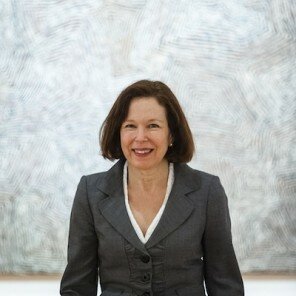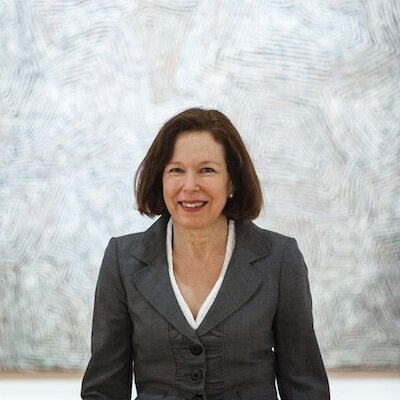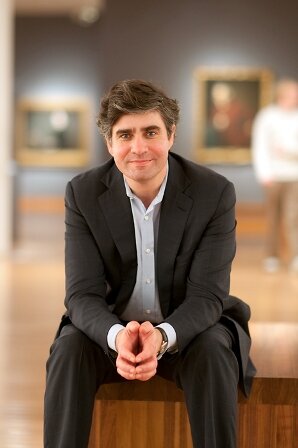
“Kimerly Rorschach, new SAM director, is a museum-builder,” runs the headline in the Seattle Times the morning after Rorschach’s appointment was announced. It’s an odd lede because Seattle Art Museum–and the Seattle Asian Art Museum and Olympic Sculpture Park–are, well…built.
Still, it’s common practice in the Seattle arts scene for institutions to make, on the face of it, bizarre and startling announcements without much transparency.
When Derrick Cartwright resigned suddenly as SAM’s director in May of last year, Seattleites were told that he, after two years at the helm, had decided to take up “scholarly pursuits.” As if that’s something that happens, you know, you move from San Diego to take over leadership of one of the Northwest’s preeminent arts institutions and then two years later you think, Oh my god, I forgot to research that thing. I should get on that.
Seattle doesn’t take its arts institutions that seriously, as businesses–though multi-million-dollar non-profits are still, technically, businesses–so these attempts to provide the emperor with new clothes don’t attract much investigative attention. Perhaps it’s perceived as unseemly to “pick on” arts groups. But this intentional blindness leads at times to spectacular meltdowns. (In November 2010, Intiman Theatre’s managing director, Brian Colburn, stepped down suddenly for “personal reasons” and by spring the theatre was closed.)
SAM’s Rorschach pick is a Rorschach test, at this point; you can see what you want in it. It is troubling that SAM seems to have been unable to find someone at an institution of more commensurate size: Rorschach is trumpeted at having “built” the Nasher Museum at Duke University into a cultural force (attendance soared from 10,000 per year to 130,000), but SAM can boast over 610,000 attendees at its downtown museum alone in 2011.
On the other hand, the well-connected Rorschach is to be the 2012-13 president of the Association of Art Museum Directors, and her standout exhibits have been “collaborations” with much more significant institutions than the university-campus-based ones she’s led. It is too soon to tell how well she will do in Seattle, but the general impression is that, after Cartwright, SAM’s board has chosen someone who is used to working with less.
Meanwhile, Seattle Opera has announced a possible, estimated, not-at-all-precise shortfall of one million dollars for its 2011-12 season (with a total projected operating budget of over $20 million). The news stories all quote heavily from the press release–I have yet to see a news outlet ask basic questions about how the Opera discovered this disturbingly fuzzy shortfall at such a late date. (Or, if the Opera knew they were falling behind earlier, why they decided against going public to try to raise money, which is what you’d expect a non-profit to do. Subscribers were informed by letter on June 28, 2012, two days after the public announcement.)
The question should also be asked, in response to the release’s (pdf) argument that because of “behavioral trends in the opera-going public away from commitment,” “single-ticket sales have increased while subscription sales have decreased,” whether this might also be related to having raised subscription prices repeatedly in the face of and during a recession. Further, someone might ask whether pricing opera subscribers out of attending regularly has had a second-order effect on fundraising potential. What the subscriber-base decline actually is is unclear since the Opera has discontinued its practice of noting subscribership levels in its annual reports.
The seriousness of the Opera’s position can be seen in its decision to, in the 2013-14 season, go ahead with performing Wagner’s Ring Cycle, but then offer a subscription season of just three operas, down from its usual five. In one accounting, you just get more, since the Ring summer festival is four operas, but it’s long been the case that the Ring plays primarily for out-of-town audiences, not the Opera’s subscribers. (Leaving aside the question of how many of them would line up to see this third presentation of the Ring III production, anyway.) The succeeding seasons will feature no summer opera, unless it is a “Ring year.”
Finally, the Opera’s artistic director Speight Jenkins is due to retire in September of 2014, so there is the issue of succession, and the Opera’s plans there have up to now been unpublicized. When Seattle Symphony was searching for a new music director, you could go hear guest conductors rumored to be “try-outs.” At the Symphony, with the selection of Ludovic Morlot; and at Pacific Northwest Ballet, with Peter Boal; the new directorial choice was made substantially in advance of the “final” performance under the aegis of the former directors, giving audiences a chance to learn about and warm to the new leadership before said leadership’s cup overflowed with daily management details.
A more interrogative approach to non-profit management would no doubt raise eyebrows–if not hackles–in Seattle’s forbiddingly polite arts circles, where everyone knows everyone else, and executives routinely hopscotch from one institution to another. But it’s just business, or should be.
Accurate information about buying patterns, fundraising results, and management performance (metrics might include staffing churn) that makes it into the public sphere are more helpful than not. If the Opera is going to note that “ticket sales cover less than 40 percent of operating costs,” the people who give deserve better than end-of-year bombshells. If SAM’s board, despite the differences of scale in management experience, believes they’ve made the best choice, museum patrons should know that, too, rather than it simply going undiscussed.

